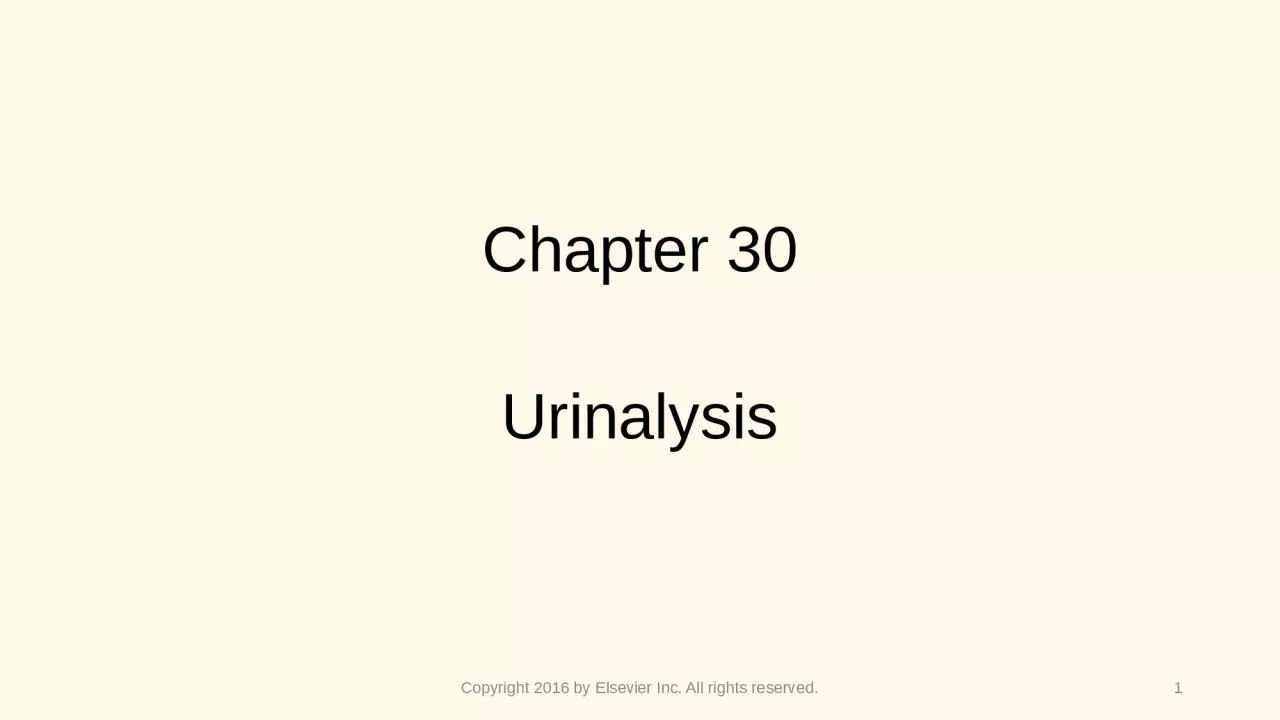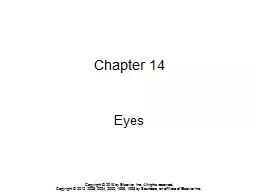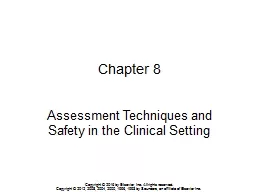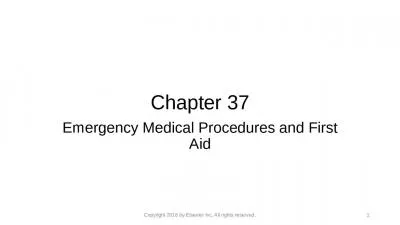PPT-Chapter 30 Urinalysis Copyright 2016 by Elsevier Inc. All rights reserved.
Author : wang | Published Date : 2024-02-09
1 Composition of Urine Physiological change in body caused by disease Can create a disturbance in kidney function Can be detected by examination of urine Copyright
Presentation Embed Code
Download Presentation
Download Presentation The PPT/PDF document "Chapter 30 Urinalysis Copyright 2016 by ..." is the property of its rightful owner. Permission is granted to download and print the materials on this website for personal, non-commercial use only, and to display it on your personal computer provided you do not modify the materials and that you retain all copyright notices contained in the materials. By downloading content from our website, you accept the terms of this agreement.
Chapter 30 Urinalysis Copyright 2016 by Elsevier Inc. All rights reserved.: Transcript
Download Rules Of Document
"Chapter 30 Urinalysis Copyright 2016 by Elsevier Inc. All rights reserved."The content belongs to its owner. You may download and print it for personal use, without modification, and keep all copyright notices. By downloading, you agree to these terms.
Related Documents














